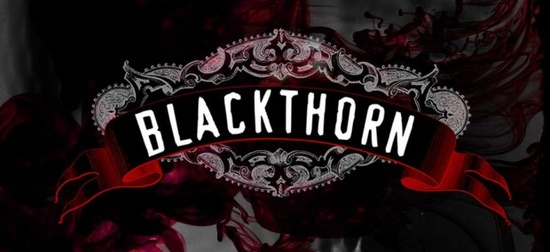It’s been a little while since I’ve written a ‘Beneath Blackthorn’ post. For those new here, please feel free to catch up on all my inside info on creating Blackthorn, not least my vampires, via the About Blackthorn tab. But for the next installment into my Blackthorn series, those delectable bad boy vampires are going to be jostled aside (temporarily!) to make room for Jask Tao – my first lycan hero.
If you’ve read Blood Shadows, the final chapter of Blood Roses or the first chapter of Blood Torn, you would already have met the uncompromising and stoic leader of the other core third species in Blackthorn.
I was nervous introducing Jask into the Blackthorn mix – first and foremost because lycans never were ‘my thing’. But this species quickly became the perfect contrast to vampires, let alone an integral facet of the series’ overarching plot. Their ‘pack’ mentality, in particular, was fascinating to explore as was a hero who not only carried the weight of responsibility as leader, but headed up the minority species compared to the more prevalent vampires. From the outset I knew I was delving into very different territory, but it didn’t take long for Jask to take on a life of his own.
The second reason I was nervous introducing lycans was my lack of knowledge surrounding the myths. Without the internet (gee, I feel so old when I admit to that), my only insight was via films or TV. But because of my previously mentioned fear of all things anthropomorpically wolfy, all I had left was rooting out books in my local second-hand bookstore – and they wasn’t exactly in abundance.
So, straight out of a psychology degree, I was lead more by social psychology in the creation of the ‘pack’ characters than pure mythology. With some later wolf research thrown into the mix, the pack’s personality started to develop.
For many years, I quite happily referred to Jask as just ‘Jask’ and his fellow lycans as ‘the pack’. This was fine whilst I was world-building for myself but, when I started considering publication for the series, I stumbled on a problem – how was I going to ‘officially’ refer to them? By then there were two established terms out there: lycanthropes (lycans for short) and werewolves. I decided to find out if there was any difference – and what a headache that turned out to be! But with the joy of the internet then on tap, the research floodgates opened.
MORE THAN ONE TYPE
Whether a permanent or temporary transformation, there are three core categories of these notorious wolf-humans:
Category 1: Shapeshifter
Shifters have become extremely popular over the past few years in books, on TV and in films. By their very nature, shifters can choose what animal to become. Wolves remain an ever popular choice, no doubt because of their dramatic potential on screen and in stories. The key factors that define this category are, firstly, shifters can change any time they choose (though sometimes heightened emotion, particularly anger, can also cause it) and, secondly, they physically become identical to the creature. Think Sam in True Blood or Jacob in Twilight.
Shifting is as old and established as mythology itself. It has always been particularly popular amongst witches. If you adhere to the original folk stories though, you can always spot a shifter through one simple feature – the animal they become never has a tail. In some Swedish accounts, a ‘werewolf’ would run on three legs, stretching the fourth one backwards to become a ‘tail’ to cover their deceit.
Category 2: Wolfman
In the days before advanced special effects and CGI, there was The Wolf Man (1941) and the Oddbods in Carry On Screaming (1966). A ‘wolfman’ is fundamentally a human that develops wolf-like features rather than morphing completely i.e. they still walk around on two legs but become covered in hair and develop fangs and claws. This always happens at night. By day, they’re ordinary humans.
Category 3: Werewolf/Lycan
The debate around the difference here is immense – not least due to the popular introduction of the term ‘Lycan’ in the Underworld films. Some argue that they are two entirely different species. But with film influences aside, I’m going to class them as the same.
The significant difference in this category is that werewolves/lycans have no control over their change (like I said, ignoring what happens with Michael in Underworld). They are subject to change under a full moon and only return back to their human state at dawn. The other core difference is that, once transformed, they are distinguishable from ordinary wolves. They are larger, more powerful and often have more grotesque physical features. They are also more intelligent and frequently maintain their human eyes (not sure I’d stick around long enough to check!). Think George and Nina in Being Human as well as David in An American Werewolf in London.
Blackthorn lycans fall into category 3, basically because it’s the most applicable and best-fit for the series.
BUT…WEREWOLF OR LYCAN?
The terms werewolf and lycanthrope are arguably interchangeable. The term “werewolf” derives from Old English whereas “lycanthrope” is Ancient Greek in origin. In essence, both mean the same thing: a human able to transform themselves into a wolf.
In Old English, “were” (from the Saxon “wer”) means “adult male human” – and, if you spell it correctly in Old English, “wulf” to mean “wolf”. The term originated in Europe and much of its folklore, like vampirism, was linked to Roman Catholic influences – not least with the magical or viral connotations.
The Ancient Greek term lycanthrope, is a bit more ambiguous. “Lykos” means wolf, however, “ánthrōpos” apparently translates as “human” not just “man” – hence, lycanthropy means “wolf human”.
If we had lots of coffee, enough time in the day and plenty of experts on hand, I’m sure these terms could be further debated, primarily because ‘man’ is often regarded to encompass all of ‘mankind’ to include women too (think Biblically), thus negating any of the above argument. But, basically, I had to make a choice and the feminist in me decided to stick to “lycanthrope”. Adding to my decision was wanting to link back to the oldest origins, and the very first mention of a human-wolf transformation was in Greek Mythology with King Lycaon turned into a wolf by Zeus. Thus my Blackthorn pack adopted the term “lycans”.
Next time, I’ll share what I discovered about the causes and origins of lycanthropy as well as the cures and methods of defence – and relate that back to my Blackthorn lycans.


